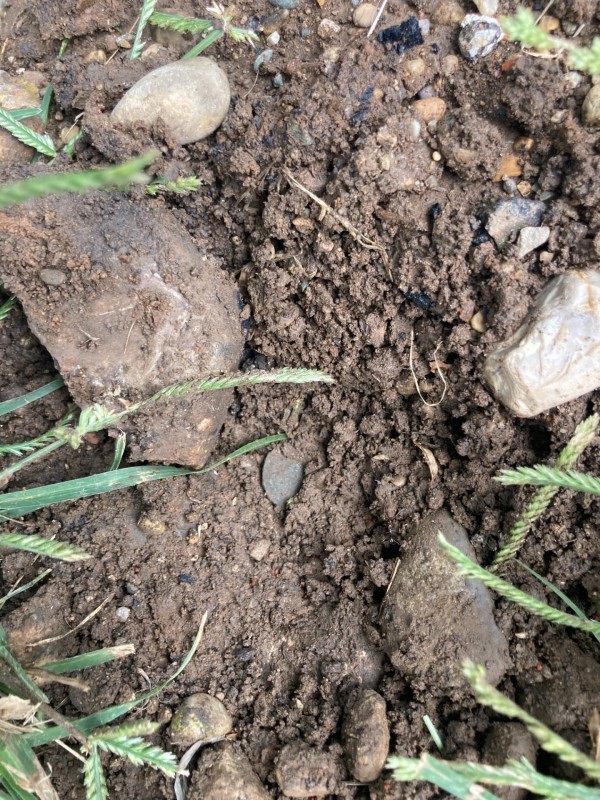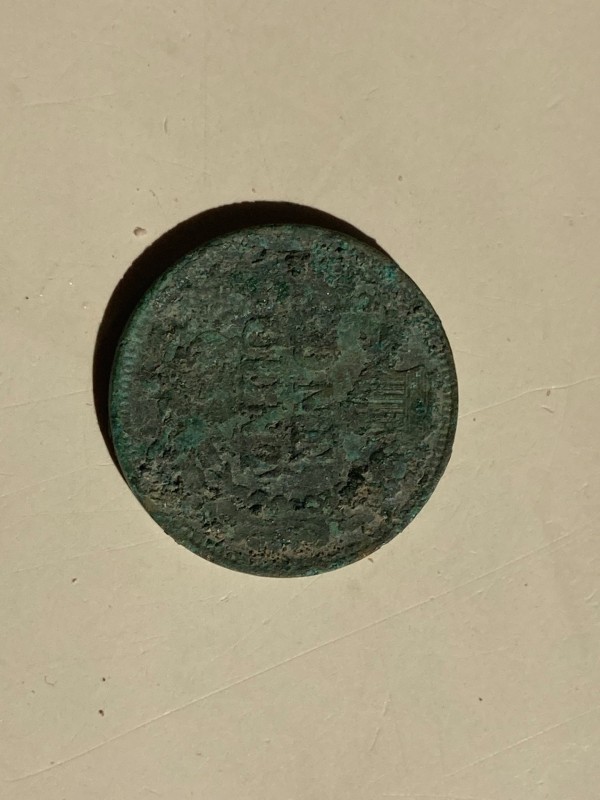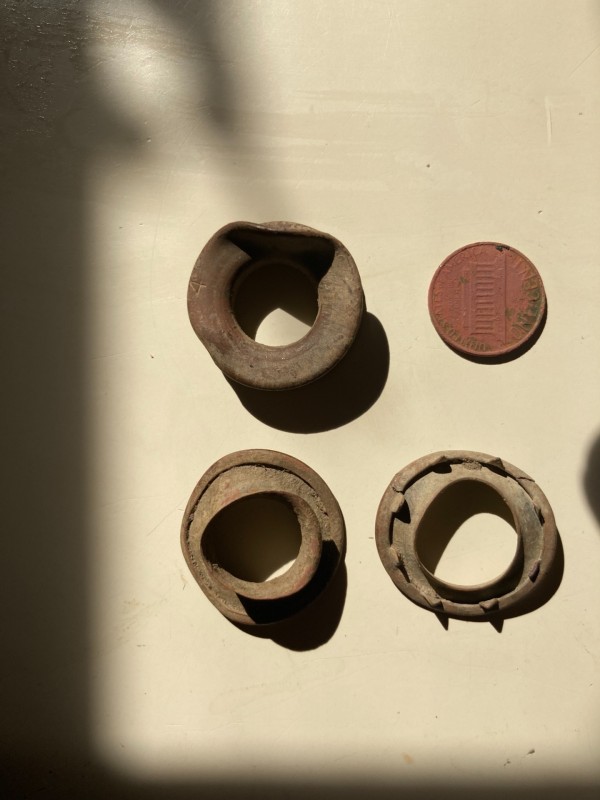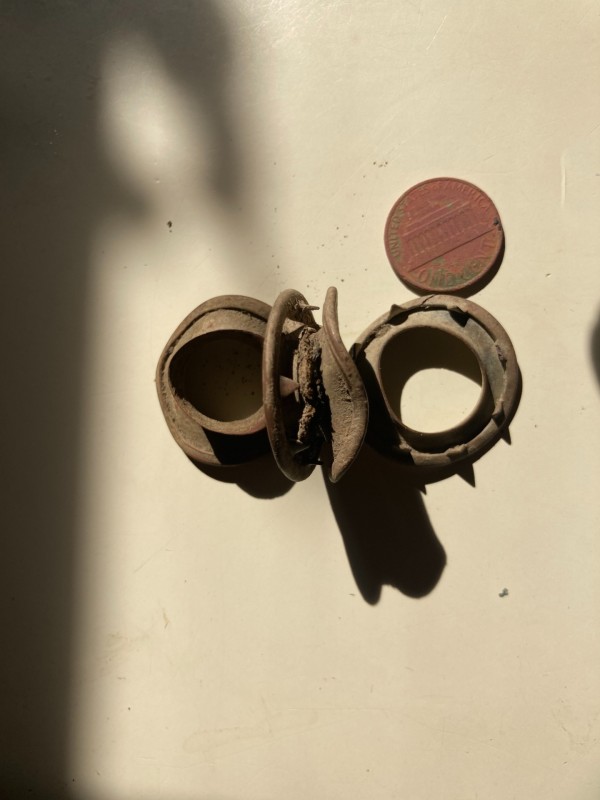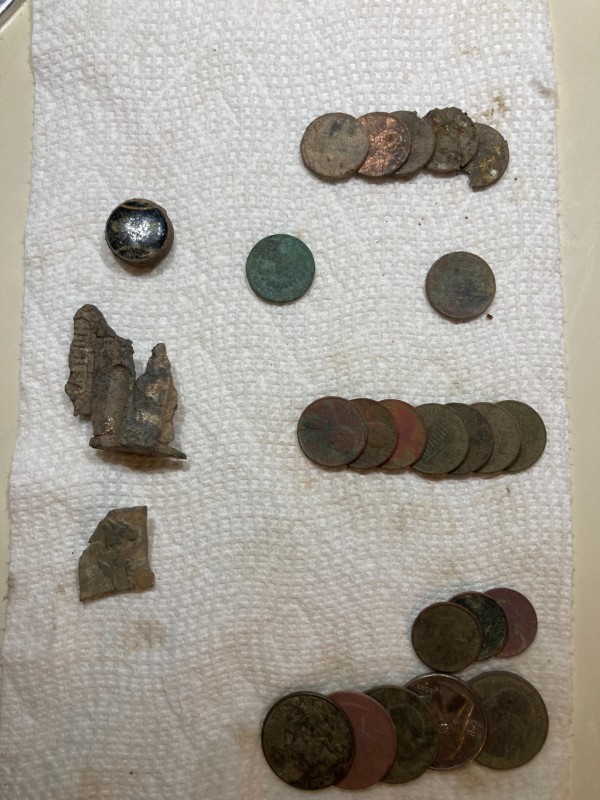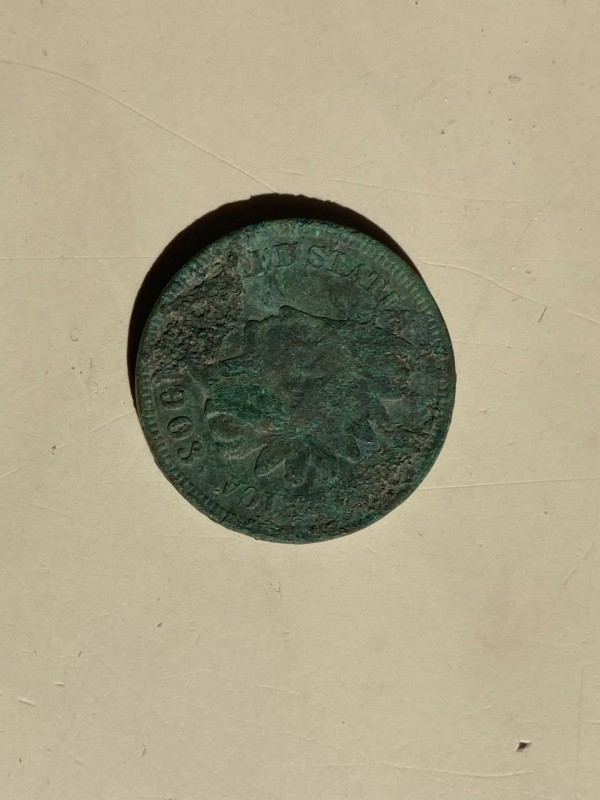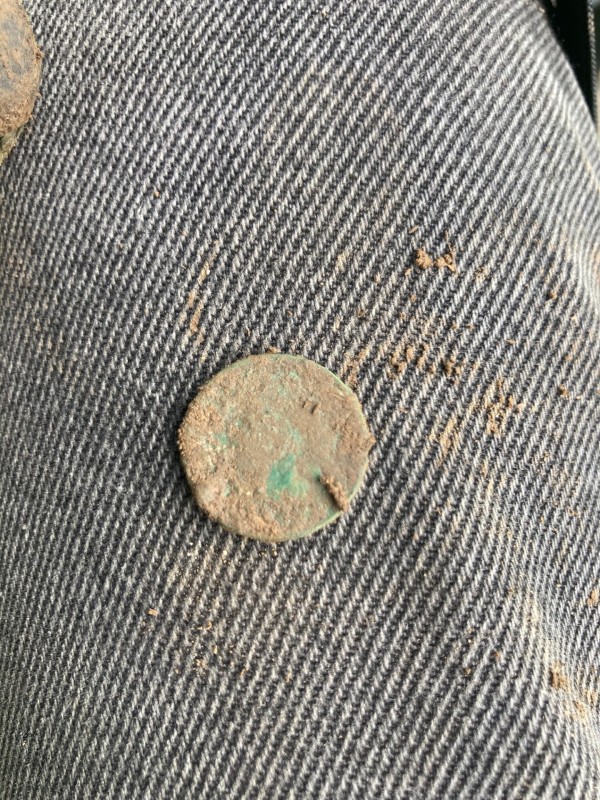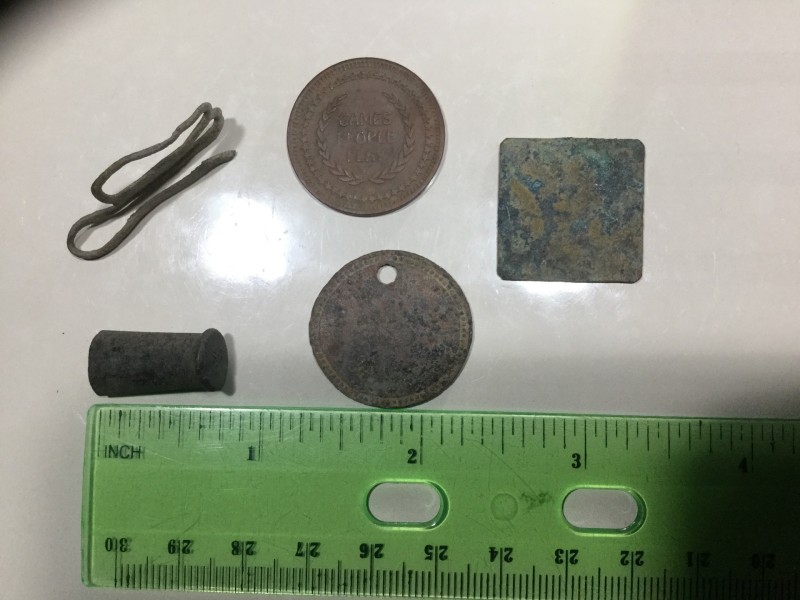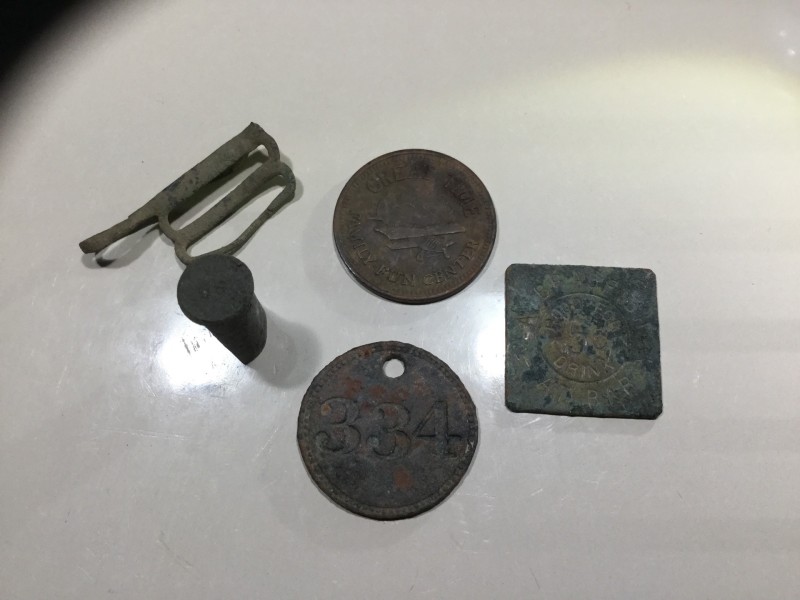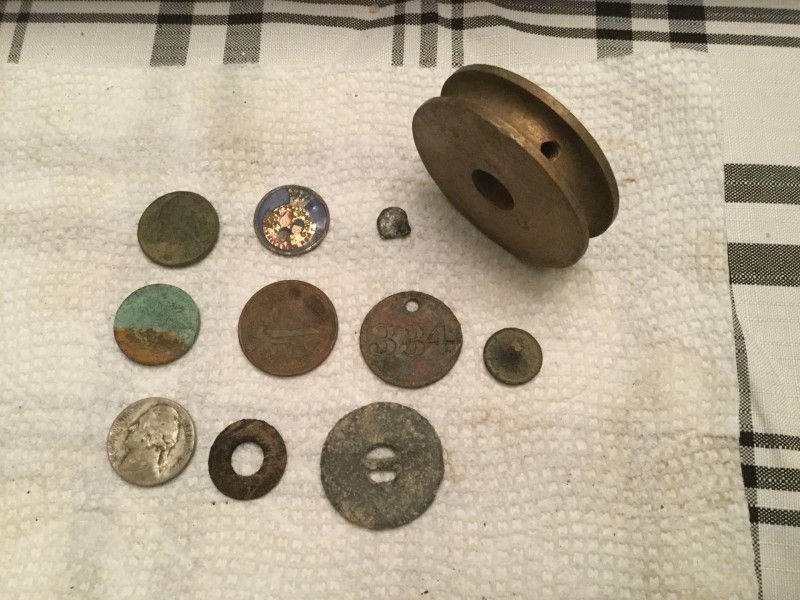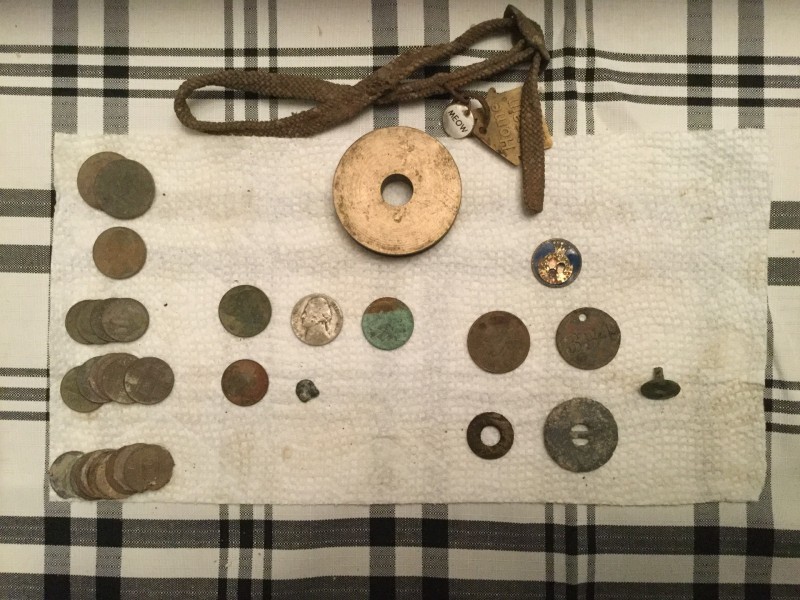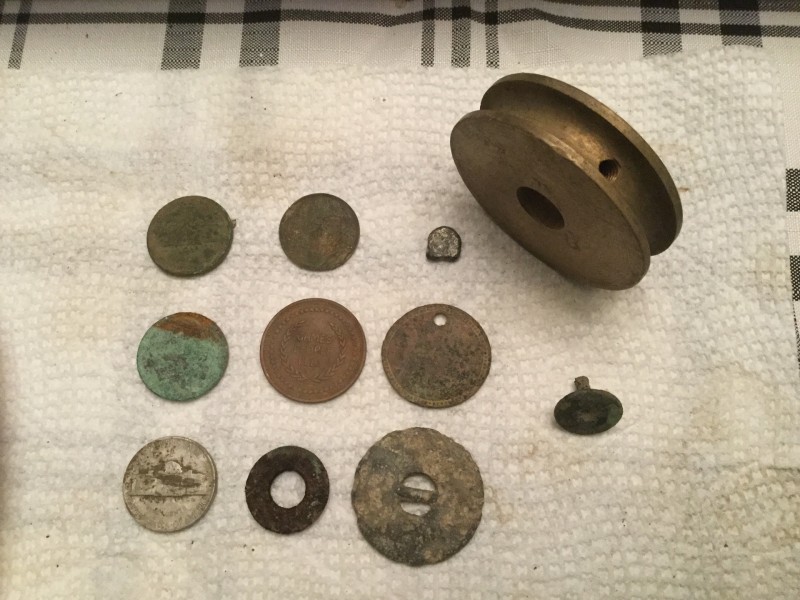-
Posts
348 -
Joined
-
Last visited
Content Type
Forums
Detector Prospector Home
Detector Database
Downloads
Everything posted by Geologyhound
-
Not sure of the exact name of your stone, as there are a variety of cryptocrystalline yellowish rocks. Some additional information like hardness and streak color would help. Will this rock scratch a penny, glass, or other Moh’s hardness index materials? If you scraped it across some unglazed porcelain, would it leave any color behind, and if so, what color? There are several processes which can generate a “shell” on a rock. One of the most common shells is called a weathering rind. This is a result of mechanical or chemical alteration of the exposed surface. Weathering rinds are a common occurrence.
-
What kind of head should I use on the hammer?
-
Last week, I hunted two old schools. I think they have both been hit pretty hard. Found some modern coins and a wheat penny at the first place along with what appears to be old #4 brass saddle grommets. These are toothed on the one side and swivel on the other. I found one intact and halves of three others. If anyone knows these are something different, I am all ears. I also found pieces of an old cap pistol, one of which still has the maker’s name – Hubley. At the second school, I was experimenting with settings from a recent post in the Deus 2 forum regarding lower sensitivity and higher audio response. I found a 1980 penny 8 inches down… Then I saw they had recently cut up half the front sidewalk over about a 15 foot section to replace a sewer line. I hunted the disturbed dirt and found a zinc penny range signal (83 - 84). I don’t know the settings mattered much, as about 2 inches down (and about 2 feet from the new sewer clean out) I found a solid green disc at about a 45° angle which I probably would’ve found with just about any settings. A 1903 Indian head penny had been hiding under that sidewalk. It was pretty well crusted. I managed to flake off most of the thin crust with a toothpick and my thumbnail. The rest of the crust doesn’t want to budge. The coin is pretty solid and has a lot of detail. If I could crack off the rest of the crust, it would be a nice looking coin. I am going to have to go back and reread some of the posts on coin cleaning… 🧐
-
Thanks! I thought for sure I remembered a black and white table format which listed seven or eight entries with things like mason jar lid etc. and the depth at which it could detect each object. Does that ring a bell to anyone?
-
I went to a meeting of my local detecting club tonight and bumped into two gentlemen from the US Environmental Protection Agency EPA). They were on a fact-finding mission in relation to new regulations slated for 2024 pertaining to water pipes. With the new regulations, apparently water supply companies will need to inventory public and private supply lines and evaluate if they are lead, copper, or galvanized steel. Someone suggested metal detectors might be a viable alternative and suggested they talk to some detectorists. So they stopped by the meeting and we got to talking. Ultimately, the plan is to replace all lead lines throughout the United States, but most companies have incomplete records for the main lines, and little to no record of private lines. Complicating the issue is the water main may be one type, the line to the meter may be another type, and the line from the meter to the house may be another. Very few property owners grant access to the structure, which means they cannot look inside everyone’s house. Even if they could, lines visible in the basement are not necessarily indicative of the type of line present outside the house. So, the goal is to be able to determine the water line type from outside the structure — preferably by noninvasive means. A metal detector capable of detecting the line and differentiating these three metals would be ideal, and much cheaper and faster than hydroexcavating or other invasive means. Water line depth varies depending on typical frost depth across the country. In my neck of the woods, waterlines might be up to 3 feet depth. But in the south they might be as shallow as one foot. The EPA gentleman said that even if a noninvasive method only works in one part of the country, it is still a major win. They had three pipe sections with them, one of each type. I showed them the D2 (9” coil) had no problem differentiating between the three types when the pipe was a foot away or so. I also used pinpoint/all metal mode to show them the difference between a point feature and a linear feature. We also discussed many other aspects of detecting I won’t bother recounting here. However, a 1 to 2 inch waterline at 3 feet depth is going to be beyond the capability of a 9 inch coil. I recall someone posted an estimated depth chart for the Xtrem Hunter based on target size. But, I am not finding it. If someone knows where it is, could you either repost it here or let me know where to find it? I explained to the EPA gentleman a two-box set up might possibly be able to find a water pipe lengthwise at three feet depth, but perhaps not crosswise. However, I cautioned I have not used a two box setup before, so they might be able to obtain better information from XP. A critical piece of needed information is this: is the Xtrem Hunter capable of discriminating? I know in the video, the word “steel” is shown on the screen. If the Xtrem Hunter can discriminate and can pick up pipes at typical depths, then this may be the method of choice for sections of the country with deeper frost lines. I gave the EPA gentlemen the web address of a couple forums (including this one), so they may browse through or even post some questions, or they may contact XP directly. Inventorying waterlines nationwide sounds like a large job. XP, if this turns into a good market for you, I wouldn’t turn down a finder’s fee... 😁
-
Looks like a mica schist.
-
Looks like it is a weathering rind on it. Does it scratch glass or a knife blade? It looks like it has pebble-sized and sand-sized grains cemented together. It may be some sort of chert-nodule concretion.
-
This is a little harder to tell in the picture. Can you scratch it with a knife blade? If not, it is probably quartz.
-
Welcome from southwest Ohio! Have you narrowed your choices, or are you still early in the process?
-
A 5 cent drink at the bar! I assume A Bradfish was the proprietor’s name and the bar’s name. My understanding is the heyday for drink tokens was from the civil war to prohibition in 1919. Local county directories do not have any listings for Bradfish from 1887 (earliest available) to 1912. The only other directories are 1939 and 1940, and had an Aug. Bradfish residing in another part of the county. The shell casing appears to be a .32 long rim fire with a US head stamp. That would be the US Cartridge Co., which dates it to between post-civil war to late 1920’s. I am not sure what the clip is. I am wondering if it is some sort of hair ribbon clip? As I post these pictures, I remember I included the 334 disc and the games people play token in my last post. Sorry for that duplication! Thanks for looking!
-
Some really nice finds there! That would have me jazzed!
-
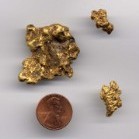
A Swing And A Home Run, First Ring Retrieval
Geologyhound replied to F350Platinum's topic in Metal Detecting For Jewelry
Beauty! Job well done! Off of which base program did you build? -
Remember a typical detector’s signal narrows with depth, so overlap you swings if you are looking for deep targets. The natural tendency is to go faster when you are not finding much. Be conscious of your attitude and slow down when needed. When you find a target in trash, or a deeper or questionable target, take some time to experiment with settings and swing speed. You may find there is an optimal swing speed for your settings. Remember the detector is only half your hunting team... Keeping some of your trash (and treasure) to scan at home will help you remember where different targets ring up. Spend some time in the local history section of your library. Old topographic maps are your friend. That is my two cents. Have fun and post some finds!
-

A Nickel Kind Of Day...
Geologyhound replied to Geologyhound's topic in Metal Detecting For Coins & Relics
That makes sense, thanks! -

Mountain Gravel Composition
Geologyhound replied to Golden_Republic's topic in Rocks, Minerals, Gems & Geology
Yes, unless you are lucky enough to find a vein (which won’t be in a fine grained sedimentary rock), then you definitely want to find stream gravels. In a large outcrop, you may be able to identify multiple flood layers (layers of gravel separated by layers of clay). The top of each clay layer/bottom of each gravel layer would be the best place to check. -

Can Anyone Identify This Rock
Geologyhound replied to Oneofthe52's topic in Rocks, Minerals, Gems & Geology
Are there air bubbles in it? If so, I would concur on the glass slag. -
Went back to a residential site the topo maps show had houses in the late 1800’s. Last house was just torn down about a week ago. Found a silver nickel (second from this site), a buffalo nickel, a 1940 Jefferson nickel and a 1970’s nickel. Now if only I had found a V nickel, I would’ve had the bases covered for the last 100+ years. 😁 The silver nickel was only an inch or two down in fresh dozed dirt. I think the dozer, or something historically, scraped up the back. The buffalo nickel is from the 1930s but that’s all I can make out. The token is from Games People Play, which was like an old time Chuck E. Cheese. The disc stamped 334 I think might be an old job shift check-in tag. The enameled disc is Salvation Army. The washer-type thing is flat on one side and domed on the other. It is brass or copper and had tar on it. I wonder if it is a tarp grommet? The odd shaped thing almost makes me wonder about a broken brass golf T. The small piece of melted metal came out of an old fire pit. It is heavy (not aluminum) and has silver highlights. I filed a corner, and it is bright silver-not gray like lead. The brass pulley is in pretty good condition and doesn’t have much corrosion patina, so it must be relatively recent. The larger grey disc is heavy and I think it’s lead. It looks like a button to me but it’s fairly large for a button. There appears to have been raised lettering/logo on one side but I can’t make out what now. If it is a lead button it should be old, but I don’t know how old. Any ideas?
-

Deus 2 Quick-connect Charger... Is This Possible?
Geologyhound replied to Rattlehead's topic in XP Deus II Forum
I wholeheartedly concur. It would be nice if I didn’t have to collapse my detector or take the remote off in order to charge simply because the mains cords are too short. Then I have to readjust the length every time I go hunt. Frankly, I have more problems with the coil charger. I have to hold my tongue just right to get it to connect. When I ease it back to the floor, the weight of the coil causes the charger to disconnect. I have to watch it closely because the charge light might light up but then turn off a second or two later. When it does stay on I have to set it down carefully at an angle so the bottom of the charge clip doesn’t touch the floor. As for the quick connect on the remote, I am guessing the D2 engineers were thinking of waterproofing rather than ease of access. But, if you’re not planning on leaving a quick connect plug in while diving, and getting a little water on the end won’t cause it to short circuit, then it may be possible.


